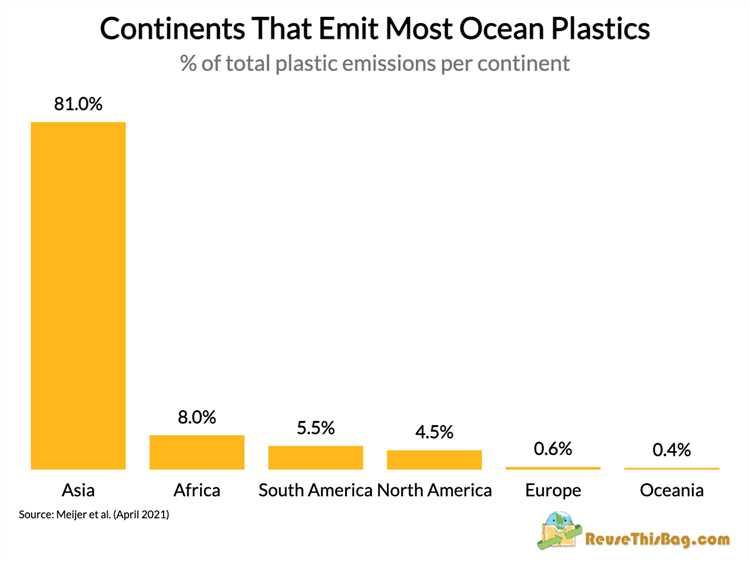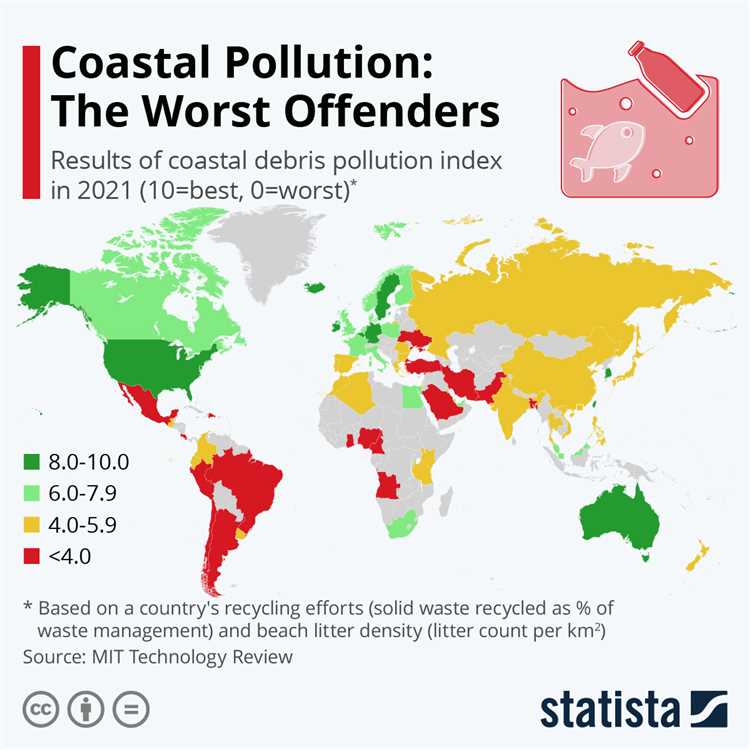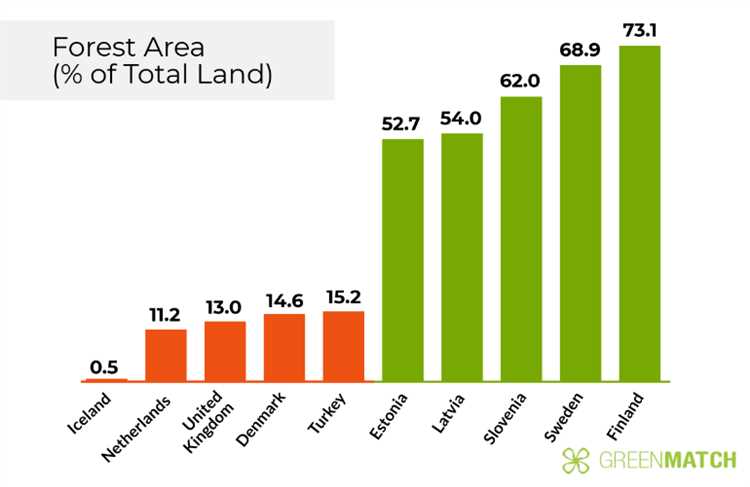
Ocean pollution is a global issue that affects the health and well-being of marine ecosystems, as well as the communities that depend on them. However, there are countries that have made significant strides in reducing ocean pollution and maintaining the cleanliness of their coastal waters.
One such country is Sweden, which is known for its environmentally conscious policies and sustainable practices. Sweden has implemented strict regulations on waste management and sewage treatment, ensuring that pollutants from land and industry do not find their way into the ocean. The country also encourages the use of renewable energy sources, reducing the reliance on fossil fuels and minimizing the potential for oil spills.
New Zealand is another country that has made impressive efforts to combat ocean pollution. With its commitment to environmental protection and conservation, New Zealand has implemented innovative waste management systems and established marine reserves. These measures help to protect the diverse marine life in the country’s coastal waters and ensure the long-term sustainability of its marine ecosystems.
Australia is also recognized for its efforts in reducing ocean pollution. As an island nation surrounded by pristine coastal waters, Australia understands the importance of maintaining the health and cleanliness of its marine environment. The country has implemented comprehensive policies on waste management and has invested in research and technology to combat pollution. Additionally, Australia actively participates in international efforts to reduce plastic pollution, with a particular focus on addressing the issue of marine debris.
- Iceland’s Commitment to Clean Oceans
- Efforts to Reduce Plastic Pollution
- Sustainable Fisheries Management
- Australia’s Efforts to Preserve Marine Ecosystems
- Marine Protected Areas
- Sustainable Fishing Practices
- New Zealand’s Sustainable Practices in Coastal Areas
- Conclusion
- Sweden’s Innovative Solutions for Pollution Reduction
- Wastewater Treatment
- Sustainable Fishing Practices
- Norway’s Strict Regulations on Ocean Waste
- Stringent Waste Disposal Measures
- Monitoring and Enforcement
- Public Awareness and Engagement
- Canada’s Initiatives to Protect its Coastlines
- 1. Marine Protected Areas
- 2. Oil Spill Response Measures
- Question-answer:
- Which countries have the lowest levels of ocean pollution?
- What measures have these countries taken to reduce ocean pollution?
- How do these countries enforce their waste management regulations?
- Which country has made the most progress in reducing ocean pollution?
- What can other countries learn from the countries with low levels of ocean pollution?
- Which countries have the lowest levels of ocean pollution?
- What measures do these countries take to keep their ocean pollution levels low?
Iceland’s Commitment to Clean Oceans
Iceland, a small island nation in the North Atlantic, has consistently shown its commitment to protecting the oceans and reducing pollution. With its pristine landscapes and natural wonders, Iceland recognizes the importance of keeping its waters clean and safeguarding marine life for future generations.
Efforts to Reduce Plastic Pollution

One of Iceland’s major initiatives in addressing ocean pollution is tackling the issue of plastic waste. The government of Iceland has implemented strict regulations to reduce the use of single-use plastics, such as banning plastic bags and implementing a deposit system for plastic bottles. This has significantly decreased the amount of plastic waste that ends up in the oceans.
Furthermore, the people of Iceland are actively involved in cleaning up their beaches and coastal areas. Voluntary cleanup campaigns are regularly organized to collect and properly dispose of marine debris, including plastics. These efforts not only help keep the coastlines clean but also raise awareness about the need for responsible waste management.
Sustainable Fisheries Management
Iceland has also made significant strides in sustainable fisheries management, which plays a crucial role in maintaining clean and healthy oceans. The country has implemented strict quotas and regulations to ensure the long-term viability of fish stocks, preventing overfishing and the depletion of marine ecosystems. This approach has helped maintain a balance between the needs of the fishing industry and the health of the oceans.
Additionally, Iceland has been at the forefront of promoting responsible and eco-friendly fishing practices. The country has adopted innovative solutions, such as using more selective fishing gear to minimize bycatch, implementing traceability systems to combat illegal fishing, and promoting sustainable fishing practices through certification schemes.
In conclusion, Iceland’s commitment to clean oceans is evident through its actions to reduce plastic pollution and implement sustainable fisheries management. By actively addressing these issues, Iceland sets an example for other nations and demonstrates that it is possible to protect and preserve the oceans for future generations.
Australia’s Efforts to Preserve Marine Ecosystems
Australia, known for its diverse marine ecosystems and iconic Great Barrier Reef, has been committed to preserving its ocean environments through various efforts.
Marine Protected Areas
A key strategy employed by Australia is the establishment of marine protected areas (MPAs). These designated zones help manage and conserve the country’s marine biodiversity. Australia has implemented the Commonwealth Marine Reserves Network, which encompasses a vast area of the Australian ocean. It includes various zones with different levels of protection, such as no-take zones, where all fishing and extractive activities are prohibited, and multiple-use zones, which allow sustainable activities like fishing and tourism under certain regulations.
Sustainable Fishing Practices
Australia also focuses on promoting sustainable fishing practices to prevent overfishing and maintain the balance of marine ecosystems. The country has implemented strict regulations and quotas for fisheries, ensuring that fishing operations are conducted in a sustainable and responsible manner. By setting catch limits and monitoring fishing activities, Australia aims to protect fish stocks and the overall health of the marine environment.
Additionally, Australia has implemented measures to combat illegal, unreported, and unregulated (IUU) fishing. This includes increased patrolling and surveillance in Australian waters, as well as collaboration with international partners to address this global issue.
Australia’s efforts to preserve marine ecosystems extend beyond its own borders. The country actively participates in international marine conservation initiatives and collaborates with neighboring countries to address common challenges. It shares knowledge and expertise in marine conservation and research, contributing to global efforts to protect the world’s oceans.
Through these various efforts, Australia demonstrates its commitment to preserving its marine ecosystems and ensuring the long-term sustainability of its oceans.
New Zealand’s Sustainable Practices in Coastal Areas
New Zealand is renowned for its pristine beaches, stunning coastline, and commitment to environmental sustainability. The country has implemented a range of sustainable practices in its coastal areas to protect and preserve its marine ecosystems.
1. Marine Protected Areas:
New Zealand has established a network of marine protected areas (MPAs) to safeguard its coastal habitats and marine species. These MPAs ensure that certain areas are off-limits to fishing, mining, and other extractive activities, allowing marine life to thrive undisturbed.
2. Sustainable Fishing Practices:
The New Zealand government has implemented strict regulations and quotas to ensure that fishing within the country’s coastal areas is sustainable. This includes setting catch limits, enforcing size restrictions, and implementing seasonal closures to protect breeding grounds and ensure the long-term health of fish stocks.
3. Coastal Development Controls:
New Zealand has put in place stringent controls and regulations on coastal development to prevent habitat destruction and maintain the integrity of coastal ecosystems. These regulations restrict activities such as construction, sand mining, and vegetation clearance in sensitive coastal areas, reducing the impact on the environment.
4. Water Quality Monitoring:
The government of New Zealand regularly monitors the water quality of its coastal areas to ensure that pollution levels are kept to a minimum. This monitoring includes testing for contaminants, controlling runoff from agricultural and urban areas, and implementing measures to address any pollution issues that arise.
5. Public Education and Engagement:
New Zealand fosters a strong culture of public education and engagement to promote awareness and understanding of coastal sustainability issues. Through initiatives such as community-based projects, educational programs, and public outreach campaigns, the country empowers its citizens to actively contribute to the protection and conservation of its coastal areas.
Conclusion
New Zealand’s commitment to sustainable practices in its coastal areas sets an example for the rest of the world. Through the establishment of marine protected areas, sustainable fishing practices, coastal development controls, water quality monitoring, and public education, the country demonstrates its dedication to preserving its marine ecosystems and ensuring the long-term health of its coastal areas. By following New Zealand’s lead, other countries can work towards reducing ocean pollution and safeguarding their own coastal environments.
Sweden’s Innovative Solutions for Pollution Reduction
Sweden is renowned for its innovative approaches to pollution reduction, implementing a range of solutions to combat environmental degradation, particularly in relation to ocean pollution. Through a combination of government policies, public awareness campaigns, and technological advancements, Sweden has been successful in significantly reducing pollution levels in its waters.
One of the key initiatives in Sweden is the strict regulation of industrial waste disposal. The country has implemented stringent policies that require industries to treat and properly dispose of their waste before it is released into the environment. This has greatly reduced the amount of pollutants entering Sweden’s oceans, leading to cleaner and healthier marine ecosystems.
Wastewater Treatment
In addition to industrial waste regulation, Sweden has also made significant advancements in wastewater treatment. The country has implemented advanced wastewater treatment plants that use state-of-the-art technologies to ensure the removal of harmful contaminants and pollutants. These treatment plants play a crucial role in preventing pollution from reaching Sweden’s waters, providing citizens with access to clean and safe water sources.
Sustainable Fishing Practices
Sweden is also committed to promoting sustainable fishing practices to ensure the long-term health of its oceans. The country has implemented strict regulations on commercial fishing, including limits on catch quotas and the use of sustainable fishing methods. By promoting responsible fishing practices, Sweden aims to mitigate the impact of overfishing and maintain the balance of marine ecosystems.
Moreover, Sweden actively supports research and development for new and innovative technologies aimed at reducing pollution. The government provides funding and resources to support projects focused on developing sustainable materials, improving waste management systems, and finding alternative energy sources. These efforts contribute to Sweden’s continued success in reducing pollution and building a sustainable future.
Overall, Sweden’s commitment to innovation and sustainability has positioned it as a leader in pollution reduction. Through strict regulations, advanced wastewater treatment, sustainable fishing practices, and support for research and development, Sweden continues to make significant strides in protecting its oceans from pollution.
Norway’s Strict Regulations on Ocean Waste
Norway is widely recognized as a global leader in its efforts to combat ocean pollution. The country’s strict regulations on ocean waste have played a vital role in maintaining its pristine marine environment. These regulations have enabled Norway to have one of the lowest levels of ocean pollution in the world.
Stringent Waste Disposal Measures
One of the key factors contributing to Norway’s success in tackling ocean pollution is its stringent waste disposal measures. The country has implemented strict regulations that govern the proper disposal of waste generated both on land and at sea. These measures ensure that waste is managed in a way that minimizes its impact on the marine ecosystem.
Norway has a well-developed waste management infrastructure, which includes advanced recycling facilities and waste treatment plants. This infrastructure enables the country to efficiently handle and process waste, reducing the likelihood of it ending up in the ocean. The government also encourages individuals and businesses to responsibly dispose of their waste through educational campaigns and financial incentives.
Monitoring and Enforcement
In addition to stringent waste disposal measures, Norway has a robust system for monitoring and enforcing its regulations on ocean waste. The country has dedicated agencies and authorities responsible for overseeing compliance with these regulations.
The Norwegian Coastal Administration, for example, plays a crucial role in monitoring the cleanliness of the country’s coastal waters. They regularly conduct inspections and surveys to assess the impact of human activities on the marine environment. In case of any violations, strict penalties and fines are imposed to deter further pollution.
Norway also actively collaborates with international organizations and participates in global initiatives aimed at reducing ocean pollution. The country has been instrumental in advocating for stricter regulations and policies at the international level.
Public Awareness and Engagement
Norway recognizes the importance of public awareness and engagement in tackling ocean pollution. The government has implemented educational programs and campaigns to raise awareness among its citizens about the negative consequences of ocean waste.
These initiatives emphasize the role of individual actions in combating pollution and encourage responsible behavior such as proper waste disposal, recycling, and reduction of single-use plastic. Public participation is also encouraged through volunteering opportunities for beach cleanups and other activities aimed at keeping the coastal areas pristine.
Overall, Norway’s strict regulations on ocean waste, combined with monitoring, enforcement, and public engagement, have made it a leading force in the global fight against ocean pollution. By setting a strong example, Norway inspires other countries to adopt similar measures and work towards a cleaner and healthier marine environment.
Canada’s Initiatives to Protect its Coastlines
Canada is committed to protecting its coastlines and has implemented several initiatives to maintain the health and cleanliness of its marine environment. These initiatives aim to prevent and reduce ocean pollution, preserve marine ecosystems, and ensure the sustainable use of coastal resources.
1. Marine Protected Areas
Canada has established a network of Marine Protected Areas (MPAs) to conserve and protect important marine habitats. These specially designated areas help to safeguard biodiversity, promote the recovery of endangered species, and mitigate the impacts of human activities on marine ecosystems. Through strict regulations and monitoring efforts, Canada is working to minimize the pollution and ensure the long-term health of its coastlines.
2. Oil Spill Response Measures

Recognizing the potential threats posed by oil spills, Canada has taken proactive measures to enhance its oil spill response capabilities. The country has invested in advanced technologies, trained personnel, and robust contingency planning to ensure a quick and effective response to any potential oil spills. These measures aim to minimize the environmental impacts of such incidents and safeguard the coastal ecosystems.
Canada has implemented strict regulations for the shipping industry, including mandatory reporting of oil spills, regular inspections of vessels, and stringent safety standards for oil transportation. These measures help prevent oil spills and ensure that any incidents are promptly addressed to minimize damage to the Canadian coastlines.
Furthermore, Canada has implemented measures to encourage responsible oil and gas exploration, focusing on the prevention of spills and the proper management of hazardous materials. These initiatives aim to protect the marine environment and ensure the sustainable use of coastal resources.
In conclusion, Canada’s initiatives to protect its coastlines demonstrate the country’s commitment to maintaining the cleanliness and integrity of its marine environment. Through the establishment of Marine Protected Areas and the enhancement of oil spill response measures, Canada is actively working to minimize ocean pollution and preserve the health and sustainability of its coastlines.
Question-answer:
Which countries have the lowest levels of ocean pollution?
Countries that have been recognized for having the lowest levels of ocean pollution include Sweden, Norway, Finland, Canada, and New Zealand.
What measures have these countries taken to reduce ocean pollution?
These countries have implemented various measures to reduce ocean pollution, including strict waste management regulations, promoting sustainable fishing practices, investing in advanced wastewater treatment technologies, and raising awareness about the importance of ocean conservation.
How do these countries enforce their waste management regulations?
These countries enforce their waste management regulations through regular inspections, fines for non-compliance, and public awareness campaigns to educate citizens about the importance of proper waste disposal.
Which country has made the most progress in reducing ocean pollution?
Sweden is often cited as a country that has made significant progress in reducing ocean pollution. It has implemented innovative waste management systems, invested in advanced recycling technologies, and has strict regulations for industries and individuals to minimize pollution.
What can other countries learn from the countries with low levels of ocean pollution?
Other countries can learn from these countries by adopting stricter waste management regulations, investing in advanced technologies for recycling and wastewater treatment, promoting sustainable fishing practices, and educating the public about the impact of their actions on the ocean ecosystem.
Which countries have the lowest levels of ocean pollution?
Countries such as New Zealand, Sweden, Norway, and Finland have some of the lowest levels of ocean pollution.
What measures do these countries take to keep their ocean pollution levels low?
These countries have implemented strict regulations on waste disposal, sewage treatment, and industrial emissions. They also focus on promoting sustainable practices and investing in technologies to minimize pollution.